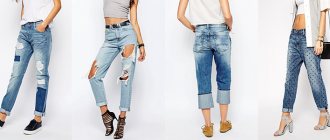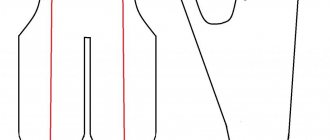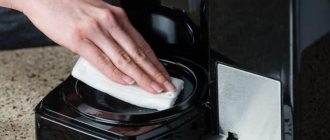Compression stockings are an elastic hosiery product that prevents the manifestation and development of diseases of the circulatory system of the lower extremities.
They protect veins during sports, during pregnancy, after childbirth, and if you are overweight.
Like any item of clothing, they need timely washing. This process has a number of nuances, without which you can easily ruin an expensive product.
Is it possible and how to properly wash compression stockings (for varicose veins, with silicone elastic, etc.) in a washing machine, why do this every day, read the article.
Is it possible?
When worn, compression stockings come into direct contact with the skin, so dead, keratinized particles, as well as dust and small specks, accumulate on them .
They gradually clog and burst the cells between the fibers, they become deformed, and the stretching properties of the knitwear deteriorate.
The lower part is worn on the foot, on which there are a large number of sweat glands and profuse sweating occurs.
To maintain cleanliness and hygiene, stockings can and should be washed periodically. Many manufacturers prohibit machine washing of their products , as indicated on the packaging.
If there is no such data, then machine washing is allowed, but subject to strict adherence to the rules. When washing by hand, it is necessary to take into account a number of nuances, which will be discussed in more detail in the article.
What are compression stockings?
When carrying out compression therapy, elastic bandages were initially used, which require strict adherence to the bandaging technique and constant monitoring of their correct application. While a person walks and moves, the bandages will inevitably gradually slide off the leg, forming constrictions. To ensure the best effect and comfort from using elastic bandages, it is sometimes necessary to “re-bandage” them up to 10 times a day.
The appearance of elastic compression stockings with graduated pressure in medical practice made it possible to forget about all the disadvantages and inconveniences of using bandages. At the same time, high-quality products not only allow you to solve medical problems, provide wearing comfort and give lightness to your feet, but also have a rather attractive appearance. This makes it possible to apply them more freely in everyday life.
Compression products (latex-based or silicone stockings) are an integral part of conservative therapy in conditions of venous and lymphatic insufficiency of the lower extremities, including:
- varicose veins;
- lymphedema;
- venous eczema;
- deep vein thrombosis;
- postthrombotic syndrome.
Unlike regular women's stockings, compression products are manufactured to strict medical and technical specifications, including strength and durability. The pressure of the stocking is distributed in such a way that the greatest compression is in the ankle joint. It gradually decreases from the lower leg to the thigh. The pressure gradient ensures that blood flows upward through the veins, towards the heart, as it should.
Why do this every day?
First of all, you need to pay attention to the information indicated on the packaging . Conscientious manufacturers indicate the basic rules for caring for the product - washing frequency, water temperature, detergent and others.
If there is no such information, then you need to wash the stockings as they get dirty or once every 1-2 days. When applying medicinal or caring creams to the skin of the feet, daily washing is prescribed.
Reminder for proper care of compression garments:
Selection of detergent
To wash compression stockings, you must use soft detergents:
- baby soap, preferably liquid or shampoo;
- liquid (gel) for cleaning delicate fabrics;
- liquid soap with natural foaming components.
Some manufacturers of shapewear also make washing liquids for their products.
The following products can be used for manual and automatic washing:
| Name | Description |
| Burti Liquid | Product from a knitwear manufacturer. Qualitatively removes dirt, stains, protein contaminants in warm water. Hypoallergenic. Preserves fiber structure. Economical. Prevents the formation of pellets. |
| ERGOFORMA | Designed specifically for stretch knitwear. Surfactants remove the most severe contaminants without damaging the fibers. Extends the service life of the product. |
| Ofa Bamberg | Economical, does not contain flavors or perfumes. The composition includes surfactants, deol, bromine, which help maintain the elasticity of the fibers. |
| Villi | Does not contain aggressive substances. Suitable for caring for delicate fabrics. Helps maintain compression properties. Removes dirt gently without damaging the fibers. Product consumption is average. |
| Luomma Idealista “IDEALISTA” | The product contains organic substances. Maintains compression and acts as an antistatic agent. Economical. |
| Perwoll Advanced Sport | Suitable for delicate washing. The surfactants included in the composition do not have an aggressive effect on knitwear. Consumption is average. |
| Heitmann Spezial-Waschpflege | Care product for elastic sportswear, also suitable for shapewear. Does not contain aggressive components. The composition includes lanolin, which cares for elastic fibers. |
It is not advisable to use:
any powders, since their grains can destroy the structure of elastic tissues;- products containing aggressive, potent chemical components - solvents, bleaches;
- conditioners, rinses;
- laundry soap, which contains fatty acids that damage the elastic fibers of knitwear.
Having selected the appropriate product, you need to choose a washing option.
How often should you wash compression stockings?
The pores of any fabric become clogged with particles of dead skin, as well as secretions from the sebaceous glands. But this is especially true for compression knitwear, because it is made of synthetics and the material is quite dense. And if you don’t wash it every day, the skin won’t breathe. Therefore, the manufacturer recommends washing compression garments every day.
When wearing medical knitwear, the fibers of the threads stretch. Gentle washing with suitable detergents restores their properties.
Which is correct?
Some manufacturers indicate in the care instructions for stockings that they cannot be washed with other clothes. In this case, it is not advisable to use machine wash.
If you have other clothes that need to be washed in a delicate cycle, then you can wash your stockings, after placing them in a special bag.
You can purchase it at a hardware store or sew it yourself from fabric with a large weave.
In the washing machine
Washing is carried out in stages:
- Place the stockings in a mesh bag. This will help prevent snags from possible contact with the drum walls or other clothing.
- Pour detergent into the compartment.
- Set the selected mode - “Hand” or “Delicate” wash. The optimal water temperature is 30-40 ⁰C, unless otherwise specified by the stocking manufacturer.
- After finishing washing, do not use the spin mode, even at the lowest speed. It is also prohibited to use the “Drying” and “Pre-ironing” modes.
- Gently squeeze out excess water and lay the product out to dry.
Handwash
The best way to hygienically care for compression stockings is to hand wash them. This is more economical - it saves water, detergents, and electricity. In addition, during a manual procedure there is less chance of damage to the fibers and loss of tightening properties .
If you have a long, pointed manicure, it is advisable to use gloves during washing to protect the stockings from damage.
The procedure is also carried out in warm water – 30-40 ⁰C, using soft means according to the algorithm:
Fill a container (basin) with warm water.- Add laundry detergent, dissolve it thoroughly, and foam.
- Soak the product for 10-15 minutes.
- The washing process should occur carefully, without sudden movements, strong friction or twisting of the product.
- Drain dirty soapy water.
- Pour cool water into the container and rinse the stockings thoroughly. The water is changed until no more traces of detergent appear in it.
- Squeeze the product carefully, without twisting or deforming. You can leave the stockings in a clean sink for 10-15 minutes to drain off excess water.
- Send the knitwear to dry.
It is undesirable to allow the fabric to become heavily soiled or stains to appear, since stockings should not be subjected to active mechanical stress or chemical stain removers should be used.
Features of material care
Purchase compression stockings according to a doctor’s prescription, which indicates the required compression class (I-IV). First of all, they must be adapted as accurately as possible to the individual structural features of the leg. This is ensured by careful selection based on precise measurements, which are carried out in a stocking salon by experienced specialists. For non-standard body proportions, it is advisable to buy custom-made stockings.
After three to six months of wearing, the stockings are replaced with new ones, since after the expiration of the period they do not exert the proper pressure and, accordingly, do not have a therapeutic effect. A good rule of thumb is once your stockings are easy to put on, it's time for a new pair! This depends not only on care, but also on factors such as the degree of swelling in the legs, the quality of the fabric, and body weight.
Put the product on gradually, evenly distributing it on the leg and smoothing out wrinkles from bottom to top. Hands should be dry, as should legs and feet. One of the most useful and inexpensive accessories that makes it easier to put on is rubber seals. They protect not only from snags, but also allow you to control compression, smooth out wrinkles and adjust length. The use of various auxiliary devices is recommended.
It is better to put on stockings at the beginning of the day, after waking up. At this time, the legs have minimal swelling, which may be completely absent. In this case, the whole process will be relatively simple. Wear compression products throughout the day and remove them only before bed.
If necessary, you can moisturize the skin with special products. However, this cannot be done before putting it on, because... putting on a stocking in this case will be extremely difficult. Oil-based products should also be avoided.
Process features for products with silicone rubber
When washing products with silicone rubber, you should consider the following nuances:
- Silicone can lose its elasticity from water and detergents, so these stockings can only be washed by hand.
- To prevent water from rising up the silicone through the fibers, its path must be blocked. To do this, pull the stocking tightly with a simple elastic band under the very edge of the silicone insert.
- Then do normal hand washing.
To maintain anti-slip properties, it is advisable not to wet the silicone strip. It can be cleaned periodically using a cotton swab dipped in a solution of rubbing alcohol.
What products should I use to wash compression stockings?
For proper washing, use detergents that rinse well
- Special products for washing compression knitwear;
- liquid soap;
- shampoo;
- delicate detergents that do not contain chlorine;
- gel.
Poorly rinsed knitwear loses its structure. The fabric loses its compression properties as the fibers become less elastic. The product will stretch faster and no longer fit your size.
What products should not be used when washing medical knitwear?
- washing powder - its particles get stuck between the fibers of the fabric and are poorly washed;
- laundry soap - it is made on the basis of fatty raw materials and alkali, which spoils the fibers of the fabric;
- fabric softeners - they have a bad effect on the synthetic fiber of the fabric, which can cause compression to decrease;
- Chlorine-based bleaches destroy fibers and the fabric loses its characteristics.
How to dry?
It is prohibited to dry products on radiators, heaters, using a hair dryer, iron or other heating household appliance.
It is also undesirable to place the product in direct sunlight during drying. Any natural or artificial heat sources destroy the structure of the canvas.
To avoid longitudinal stretching, carefully wrung out knitwear is laid out on a horizontal surface covered with a thick cloth or terry towel. Straighten it and leave it until completely dry with free access of air to the product.
To speed up the drying process, stockings can be placed between two layers of towels, pressed lightly , and dabbing to absorb excess moisture. And then transfer to another dry cloth until completely dry.
You will find maximum useful information about washing clothes and various fabric products here.
What type of drying is best to use?
Each model has instructions for safe drying. Stockings should not be stretched as this can damage the fibers and affect their shape. You can also dry it in a machine, but only in the delicate drying mode. In any case, it is better to do this in normal humidity conditions.
Stockings should not be hung out as the weight of excess water causes them to stretch. Usually they are laid out in a horizontal position, having previously been placed between a towel, which will absorb excess moisture.
Compression stockings should not be dried near heat sources, and be careful not to expose them to direct sunlight.
Why is it necessary to wear compression garments?
While every woman is accustomed to taking care of her hands, hair and nails, only a few think about the beauty and health of her feet. Compression underwear - stockings, tights and knee socks - will help prevent the appearance of varicose veins and a “pattern” of bulging veins.
Why is it needed?
- preventing deformation of the walls of blood vessels;
- reducing the risk of blood clots;
- reduction of swelling;
- increasing the stability of the legs to high loads;
- formation of the correct body contours.
Varicose veins are a common problem among pregnant women. Increased stress on the legs, an increase in overall body weight and difficulty in blood circulation lead to the appearance of bulging veins.
Compression garments can prevent their formation. By following simple rules for wearing and caring for it, you will be able to maintain the beauty of your legs even in the last months of pregnancy.
Do you think that medications are an alternative to compression garments? Remember that the medications have a number of contraindications and are not recommended for use by pregnant women.
Where to buy anti-embolic stockings?
You can buy anti-embolic stockings in Ukraine in the specialized chain of stores ORTO SMART - Medtekhnika, orthosalon. Why do we not recommend purchasing such products in pharmacies? First of all, because those products that are offered to you in non-specialized stores may not meet quality standards, and, therefore, will not have the necessary therapeutic and prophylactic effect. We want your costs to be justified, so we are ready to provide you with all quality certificates that confirm the effectiveness of the products we offer.
You can always buy Copper, Aurafix or Belsana stockings on the website of our online store Orthosalon. We provide a wide range of products, a rich color palette and affordable prices.











